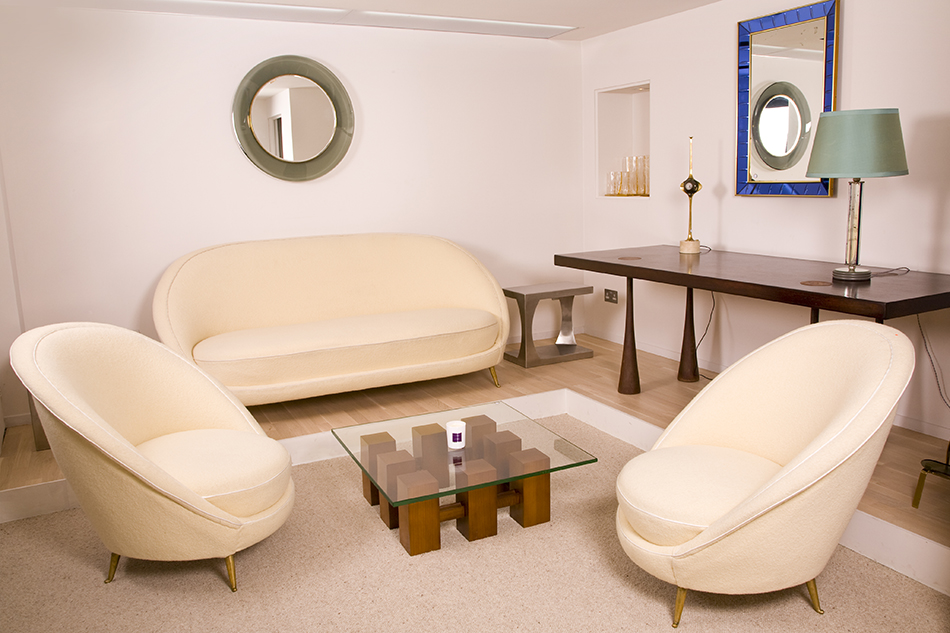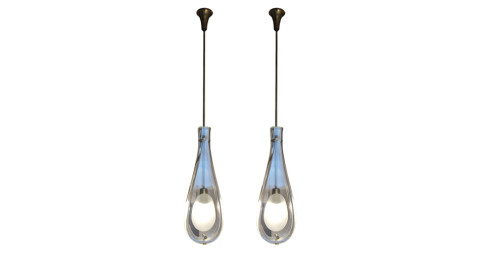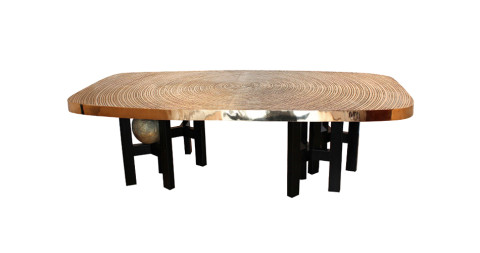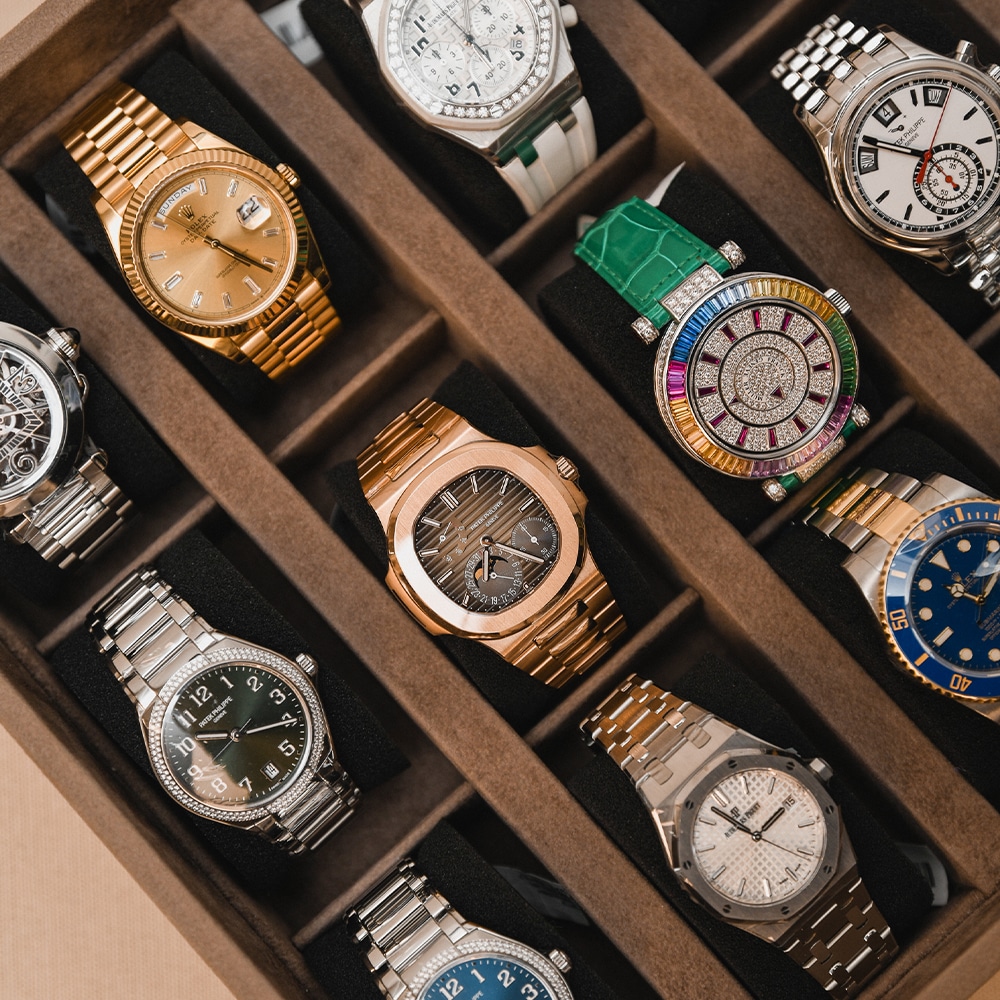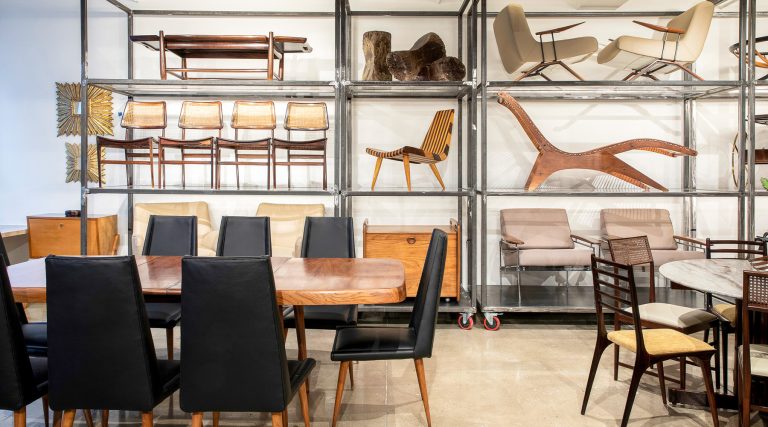
September 11, 2013Dealers Philippe Rapin and Erik Müllendorff (shown) opened their modern gallery on London’s Pimlico Road in 2009. Top: A corner of the gallery showing various pieces by Giò Ponti, plus a 1952 armchair (one of a pair) by Giulia Veronesi for I.S.A.
It’s the rare business that’s born out of rivalry, but so goes the creation story of 88-Gallery, whose founders — Philippe Rapin and Erik Müllendorff — joined forces five years ago after meeting as competing bidders at a Brussels auction. The object up for grabs was a rare 1950s Ettore Sottsass brass-and-walnut table with a convex top. “The table had a timeless quality,” remembers Müllendorff. “And, being classically trained dealers, Philippe and I were both drawn to that element as much as its avant-garde nature.”
A few months after the auction, the Belgium-based dealers found themselves in London, where they were each participating in the Olympia International Arts & Antiques Fair. Meeting up for drinks, they commiserated about the small size and relative lack of character of their individual booths. And so they decided to cohabitat for the next outing of Olympia, working with an architect to create a modernist Roman temple filled with Giò Ponti and Fontana Arte pieces. They officially became business partners in 2009, thanks to a serendipitous visit to Müllendorff’s friend Orlando Blanchard, whose gallery was situated on London’s stylish Pimlico Road. “We were asking him if any spaces in the area were available,” says Müllendorff, who left an engineering career to study art at Sotheby’s before helping to run his father’s 16th-century gallery, E. Mullendorff Antiques, in Antwerp, where he grew up.
“Orlando had been wanting a change,” continues Müllendorff. “So he suddenly put the keys down on a table and said, ‘How about this space?’ ” The three men promptly sealed the deal over lunch at the chic Como Lario around the corner, and the duo’s gallery soon opened. “At first we called it Rapin-Müllendorff,” says the French-born Rapin, who boasts nearly four decades of experience as an antiquaire, including nine years as the owner of the now-defunct gallery Guerin et Rapin, in Paris. “But it wasn’t the easiest name to spell over the phone. So we re-baptized it 88-Gallery, a name greatly approved by our Chinese clients, as the number means good fortune in the Chinese culture.” (Müllendorff’s family gallery, meanwhile, has morphed into 88-Gallery Antwerp, and there’s also an 88-Gallery Paris, which launched in September 2012 on the Quai Voltaire.)
“Erik and I have backgrounds in classical antiques, which is crucial when it comes to assessing the twentieth-century pieces.”
-Philippe Rapin

A quartet of Murano glass obelisks from Venini stand in front of Marc Cavell’s 1971 kinetic painting Sinuzoide.
In addition to Chinese clients, the London location has also given the duo increased exposure to Brazilian, American and Russian customers, as well as to such notable British designers as Veere Grenney, Todhunter Earle and Annabelle Thorpe.
No matter from which country, design aficionados appreciate the gallery’s penchant for displaying rare 20th-century furniture, lighting, sculpture and paintings. The shop is minimally decorated, with concrete whitewashed walls and only a few items on view at a time. Key recent examples of their offerings include a monolithic stainless-steel 1970s Gabriella Crespi dining table whose central sunken reservoir offers a perfect perch for wine bottles or flowers, a rectangular slate cabinet and a pair of bone consoles by Belgian designer Ado Chale (the latter for Allemeersch) and a pair of plaster stools by the American designer John Dickinson.
What sets us apart,” says Rapin, “is that both Erik and I have a background in classical antiques — we can appreciate a sixteenth-century albarello pitcher or a seventeenth-century tortoiseshell cabinet. That historical perspective is crucial when it comes to assessing the twentieth-century pieces.”
“Philippe has trained his eye for more than thirty-five years on everything from archeology to kinetic art,” adds Müllendorff. “When you’ve been an eighteenth-century porcelain dealer for that long, you can spot restoration on a Giò Ponti vase from miles away. If Philippe hadn’t chosen a career as a dealer, he would have become a history professor.”
And whatever became of that jointly coveted Sottsass table from the Brussels auction? “Philippe won it,” says Müllendorff with a smile. “But he ended up putting it in 88-Gallery, and, as soon as we opened, it sold.”
Visit 88-Gallery on 1stdibs
Talking Points
Erik Müllendorff and Philippe Rapin share some thoughts on a few choice pieces.

